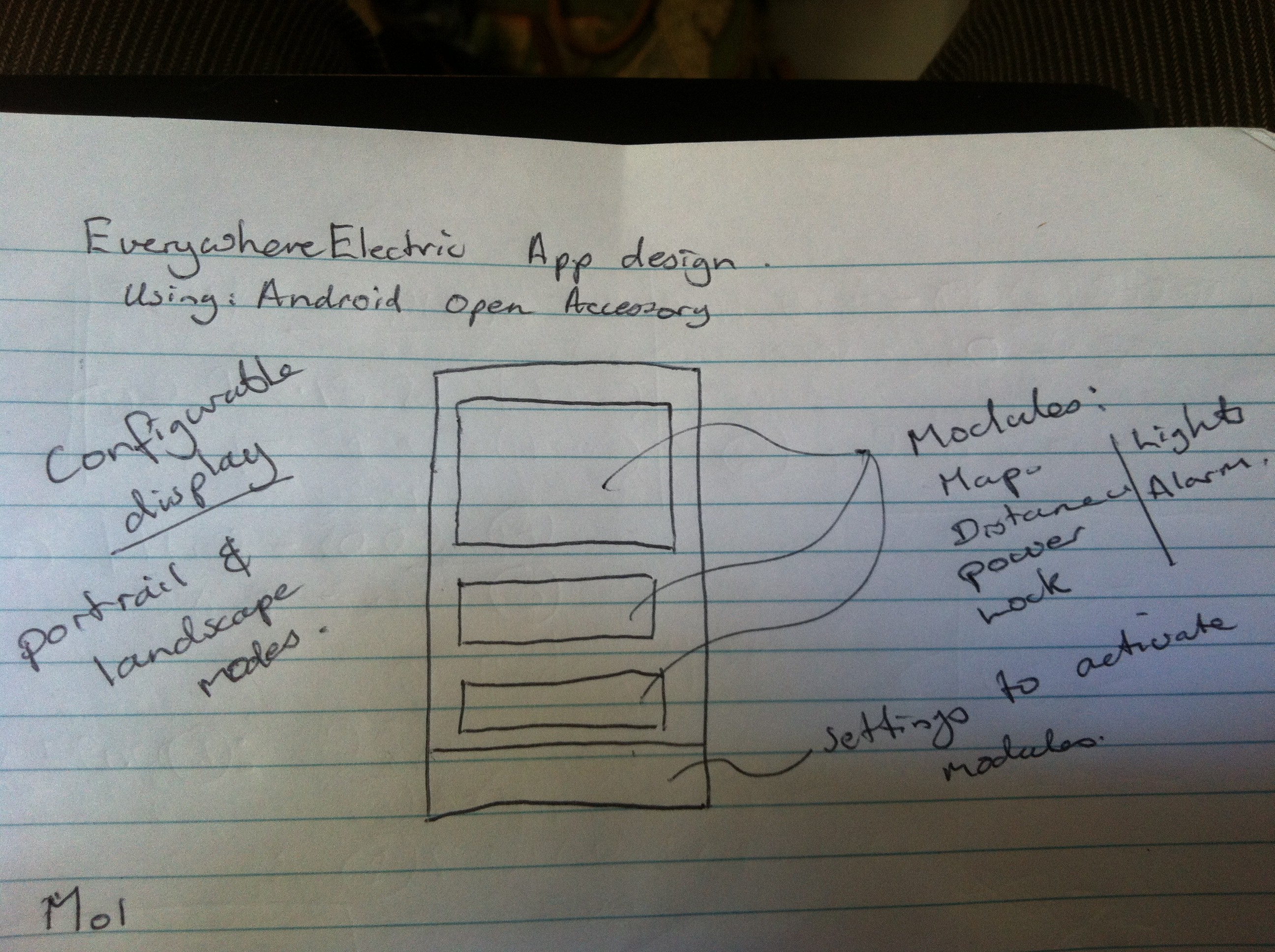-
Android Application
08/21/2014 at 05:31 • 0 commentsAt this stage of the project, the Android Application development is rudimentary. Currently we have a few sketches outline the building blocks of the application itself. Because of the flexible build regarding the hardware there are many routes that this application could take. The main goal of the application is to allow the system to be expanded for any hacker by using configurable modules, of which can be activated through the settings.
The Modules planned to be included (not limited to):
Navigation using Google Map API
Information blocks:
- Speed
- Time
- Start/Stop time
- Battery Charge
- Distance Travelled
- Distance left
- Power Draw
Hardware Expansion:
- Locking the system, where the phone can act as a key. Obviously password protected.
- LED lights, frame lights, head lights, and many more.
Settings:
- Speed Limit
- Acceleration Rates
- Assisted Power
- Motor Identification
Once the base app is established, with the communication with the hardware protocols defined, this can allow the addition of addition modules for any hacker to increase the functionality of their build.
-
Motivation and philosophy
08/19/2014 at 13:07 • 0 commentsTransporting humans from A to B takes a significant toll on the world around us, especially since we usually transport a tonne of metal with us at the same time, generally powered by inefficient, non-renewable petrol/gas engines which take yet more energy to produce and maintain. Not to mention the wastage of time and fuel resulting from traffic congestion and the huge infrastructure cost to cope with the growing density of cities around the world.
But this is a problem which seems to have an obvious solution.. Use smaller, more efficient vehicles and all of the above problems get a lot smaller too. Bikes are a fantastic example, you literally can’t transport yourself over average commuting distances more efficiently and you can avoid congestion simply because small vehicles can flow around cars like water through sand. However, it does require a bit of effort, and it’s not always practical to arrive sweaty or ride long distances under pedal power alone. Sometimes you are just not in the mood, or the weather isn't quite right and this pushes you back to old car driving habits (guilty!)
In the last couple of decades, electric motors and light weight batteries have become available. Thus the Ebike was born - the second most efficient method of commuting! With obvious advantages.
The concept has caught on in Europe and eastern countries, in fact electric bikes are outselling regular bikes in places like Italy and Germany. The trend is taking a while to hit the US and Australia (our homeland) however, so there is clearly a lot more work to be done in changing people's perception of travel. Safety is a big issue as well.
Electric vehicles are already around. You can already buy a motor, battery and controller, strap them to a bike and go. Why reinvent the electric wheel? Well, they exist but they are limited, overpriced and not designed with flexibility in mind. in fact they are often designed to obscure IP and limit functionality for (valid) commercial reasons.
By making an open source electric vehicle system, which in its nature is engaging and flexible, it will appeal to the types of people who are able to break apart the established norms and build new innovative solutions without annoying limitations on possible implementation. This project could be a great foundation to build new personal transportation devices to suit every need imaginable. This is what open source is all about - sharing core knowledge and hard earned work to allow others to add, change, improve and create things which may never otherwise happen.
EverywhereElectric
Motor control/monitor system for a fully featured EV (bike, board, etc), >1KW 3phase motor control, Android control interface and hardware.
 Jarrod
Jarrod